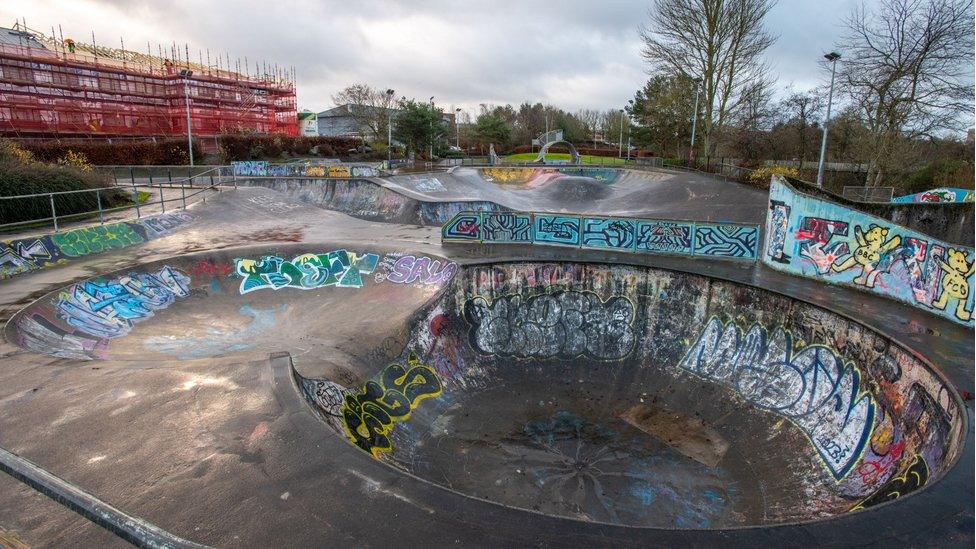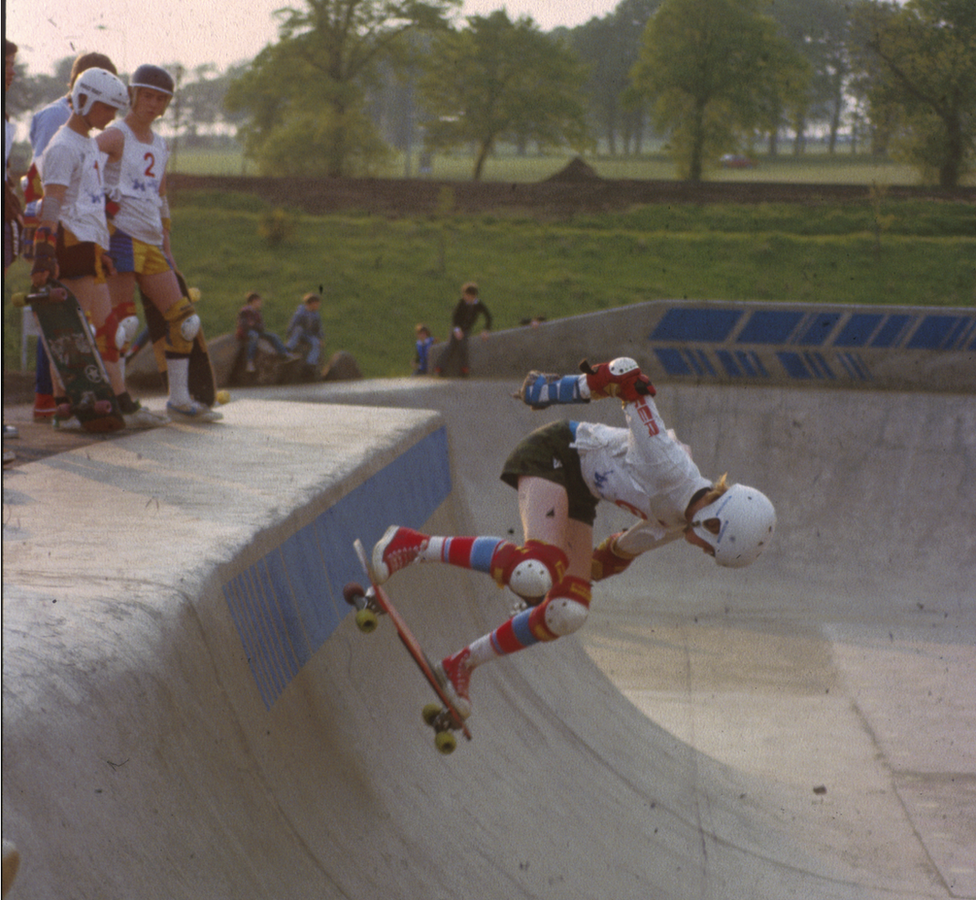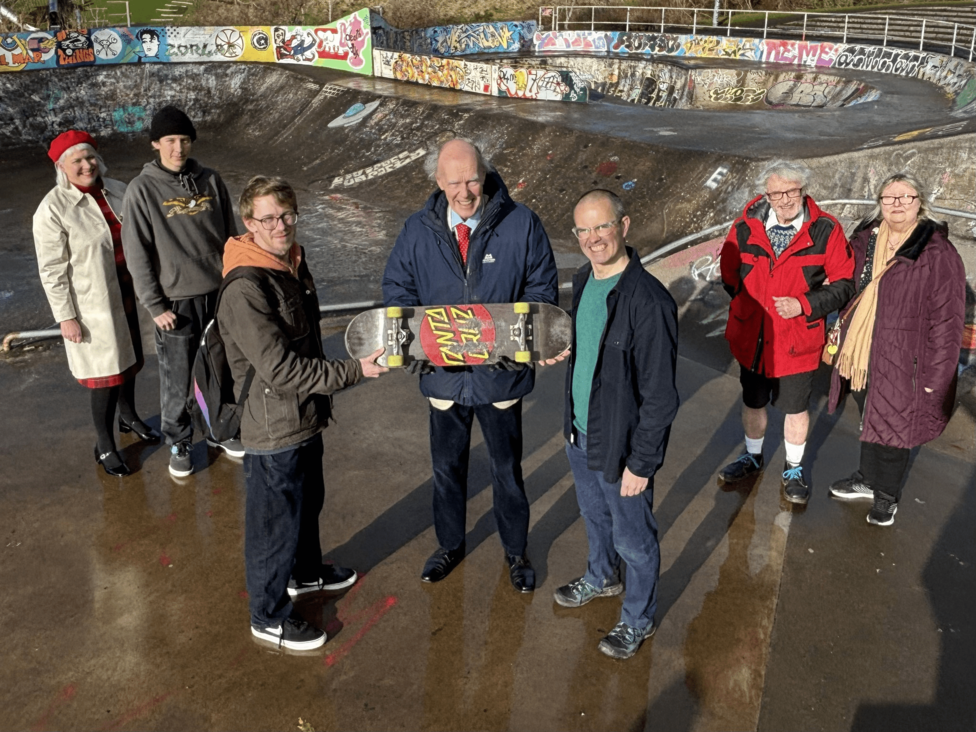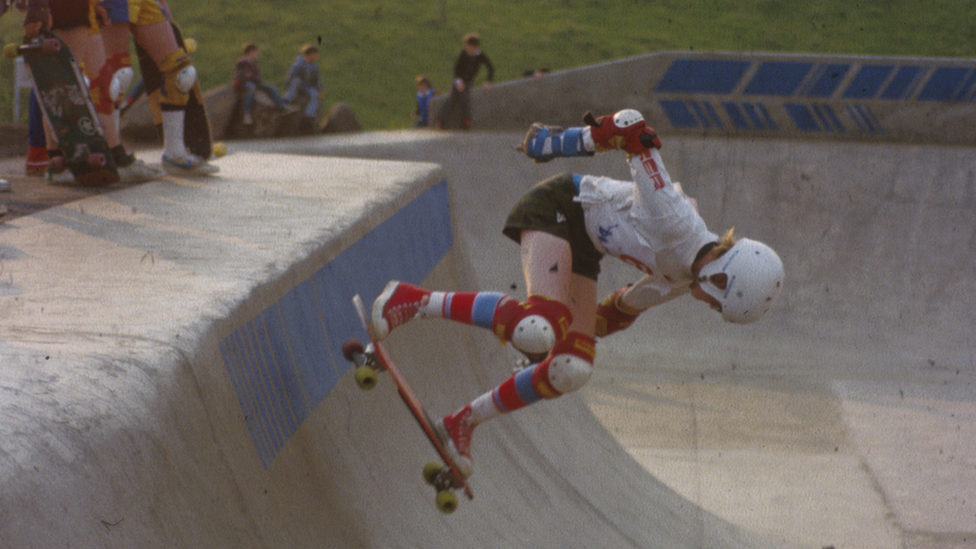Livingston skatepark is first to be listed in Scotland
- Published

Star skaters have visited the West Lothian skatepark
A West Lothian skatepark described by Tony Hawk as a "legendary place" has become the first skatepark to be listed in Scotland.
Livingston, or "Livi", skatepark opened in 1981 and has attracted world-famous skaters such as Steve Caballero and Mike McGill.
Skating icon Tony Hawk drew crowds when he appeared at the bowl in 1991.
Historic Environment Scotland (HES) said it was the oldest purpose-built skatepark in Scotland.
It said concrete skateparks from this time were increasingly rare across the UK as many had been filled in or demolished.
Livi has been designated as a listed structure at category B, meaning it is an architecturally and historically important site.
The only other listed skatepark in the UK is Rom skatepark in London.
Listing the site does not prevent it being used as a skatepark, but it ensures the long-term protection and maintenance of the facility.
Skateboarding became popular in Scotland in the 1970s, which prompted local skater Kenny Omond to approach the Livingston Development Corporation with the idea for a skatepark.
It was designed and built by architect Ian Urquhart after he was inspired by his skater wife Dee Urquhart.
The pair travelled across the United States to learn how to construct and assemble a skatepark.
Mr Omond designed an extension to the park in 1992, when very few skateparks were being built.
It has become iconic among the skating community.

Skateboarding at Livingston in May 1981
Skateboard Scotland, the official governing body for skateboarding in Scotland, helped HES survey local and national opinions on the skatepark.
The survey gathered over 500 responses, where locals told of meeting lifelong friends and partners at the park and teaching their children wheeled sports there.
Skaters from further afield spoke of travelling hours and crossing borders just to visit the skatepark.
Andrew Murray told the survey how he first skated Livi at just nine-years-old.
"I made friends there, I broke bones there, I saw professional skateboarders display lines I didn't know," he said. "It was my portal into an activity and common language that I have carried forward for a 40-year period."
Skater Cameron Brougham said it was "deeply ingrained in the DNA of Scottish skateboarding".
'A legendary place'
HES said the skatepark was an authentic reflection of the skate culture of the 1970-80s.
Head of designations Dara Parsons said: "Iain Urquhart's original design is grounded in early skate culture, and the park is known around the world for its pioneering design, the quality of the skating experience, and as a prototype for later concrete skateparks.
"Tony Hawk, who skated there back in 1991, described it as 'a legendary place', and it is clear that this remains a highly-valued creative and social space for the community of Livingston and the skating and biking community.
"Through designation, we hope to recognise and protect the best examples of our cultural heritage.
"Listing Scotland's oldest skatepark helps demonstrate the variety of our historic environment and especially the important role the built environment of the late 20th Century structure has in telling Scotland's story."

West Lothian Council, HES and Skateboard Scotland welcomed the news
Rick Curran, secretary at Skateboard Scotland, said he was pleased to hear the news as "this designation will help ensure Livi retains the essence that makes it a famously strong foundation for Scottish skateboarding".
"Livi is a beloved, world-renowned skatepark recognised by many for its ground-breaking design," he said.
"But at 43 years old it is showing considerable signs of age, so we are extremely keen to see the necessary steps taken to ensure this essence is protected for future generations through sympathetic, considered stabilisation and restoration."
West Lothian Council first applied to secure historic status for the site in 2022.
Council leader Lawrence Fitzpatrick said he was delighted with the decision to list the "unique facility".
He added: "As the custodians of Livingston Skate Park, we are well aware of the importance of the park, and adding it to the list of Scotland's significant structures will help ensure it is protected for future generations."
Related topics
- Published14 April 2023
